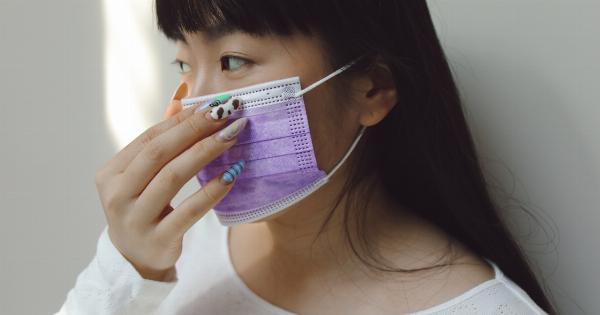For those who have eye refractive errors such as myopia, hyperopia, and astigmatism, contact lenses are considered a very convenient alternative to eyeglasses.
Contact lenses are thin and curved lenses that are placed on the surface of the eye to correct vision. Contact lenses provide excellent vision correction that is less impacted by environmental factors like glare, fogging, and distortion that glasses may have.
Contact lenses are also advantageous for active individuals or athletes as they avoid the problem of glasses slipping or falling off during sports activities.
Contact lenses are made up of different materials including silicone hydrogel, rigid gas-permeable, and soft contact lenses.
Soft contact lenses are the most common type of contact lenses because they are comfortable to wear and can be disposed of after use. But it’s worth noting that contact lenses are medical devices that require proper use, care, and maintenance.
Wearing contacts that have not been adequately disinfected or improperly worn may lead to eye infections, inflammation, conjunctivitis, and other complications. That said, below are some occasions when contact lenses go beyond just a little irritation.
Contact Lens Discomfort
Most people who wear contact lenses experience slight discomfort at one point or another. Mild irritation is nothing to worry about and is most commonly caused by dry eye syndrome.
Blinking acts as a cleaning mechanism for the eyes, spreading tears across the surface, removing dirt and debris. However, when the eye fails to produce an adequate amount of tears to keep the surface of the eye lubricated, the eyes become dry and irritated.
This could be due to allergies, hormonal changes, environmental factors like dry climate or wind, and a variety of underlying medical conditions. Wearing contact lenses in such a state makes the situation worse and may cause more discomfort than usual. Contact lens discomfort can also be caused by eyelid inflammation and uneven fit of contact lenses on the surface of the eye.
Eye Infection
When contact lenses aren’t used, stored, or cleaned properly, there is a high chance of infection. Bacteria, viruses, and fungi can accumulate on the surface of the contact lens and cause eye infections like keratitis.
Keratitis is a type of eye infection that causes inflammation and pain in the front part of the eye. It is usually caused by bacteria, viruses, and fungi from poorly disinfected contact lenses. Keratitis symptoms include eye redness, discomfort, blurred vision, and tearing.
The good news is eye infections like keratitis are treatable if caught early on, but in severe cases, they may cause permanent vision damage.
Corneal Ulcer
Corneal ulcers are injuries that develop on the cornea, the part of the eye that covers the iris and pupil. Corneal ulcers are often caused by bacterial, viral, or fungal infections that result in erosion of the cornea tissue.
Wearing contact lenses that are not well maintained and stored can cause abrasions on the cornea, which make it susceptible to corneal ulcers. Corneal ulcer symptoms include eye redness, blurry vision, sensitivity to light, eye discharge, and severe pain. Corneal ulcers are a serious condition that can lead to vision impairment if not treated promptly.
Corneal Hypoxia and Vascularization
When a contact lens is worn, it rests on the surface of the cornea blocking the supply of oxygen to the eye. Corneal hypoxia is a condition that results from low oxygen supply to the cornea.
Soft contact lenses are made up of a hydrogel material that is more prone to reducing oxygen supply to the cornea leading to corneal hypoxia. Corneal hypoxia symptoms include eye redness, irritation, and discomfort. When corneal hypoxia is not managed, it could lead to corneal vascularization. Vascularization is the growth of blood vessels on the cornea caused by insufficient oxygen supply.
Corneal vascularization is a serious condition that can lead to vision loss and potentially require a corneal transplant.
Smudged Contact Lenses
Smudging occurs when foreign substances like fingerprints, oil, and dirt get stuck on the surface of the contact lens.
Smudging causes blurry vision, and wiping the lens with your fingers is never an effective way to clean the lens as fingers may not be sanitized, and the smudging may only get worse. Instead, smudged contact lenses should be rinsed with a saline solution, leaving it wet in your palm and rubbing it gently with your fingertips.
In severe cases of smudging where the contact lens is damaged or blurred, it’s advisable to replace the lens as soon as possible.
Dislodged Contact Lenses
Dislodged contact lenses occur when contact lenses move from their intended position on the surface of the eye.
Contact lenses can dislodge from the eye for various reasons, including rubbing the eyes too hard, blinking, and wearing contact lenses that are not properly fitted for the eye. Dislodged contact lenses cause blurry vision and irritation and can be frustrating for people with these eye devices.
If your contact lenses dislodge, it’s important to remove the lenses and consult with an optometrist to find the cause of the dislodgement.
Scratched Contact Lenses
Scratched contact lenses are common and can occur from activities like swimming or sports with balls and rackets. Scratches reduce vision clarity, and they make the contact lens difficult to wear.
For minor scratches, gently rubbing the lens with a clean finger and rinsing it with a saline solution may repair the lens. However, for severe scratches, it’s best to replace the lens altogether.
Tearing and Rips
Contact lenses are supposed to undergo regular checks for rips and tears before being worn. Contact lenses that have been used for long periods may become brittle and rip apart when being inserted or removed.
These tears in contact lenses have sharp edges that may scratch the eye and cause eye irritation and infection. Similarly, rigid gas permeable lenses may break during insertion or removal leading to discomfort and poor vision.
To prevent tearing and rips, it’s essential to keep contact lenses moist by using clean saline solution to lubricate them for insertion or removal. Tearing and ripped contact lenses should be discarded and replaced right away.
Conclusion
While contact lenses provide excellent vision correction for those with refractive errors, they are medical devices that require proper use, cleaning, and maintenance.
Discomfort and irritation associated with contact lenses are common and relatively harmless in most cases. However, when contact lenses cause significant irritation, discomfort, and pain, it may signify a severe underlying condition that requires a consultation with an optometrist.
Proper use and maintenance of contact lenses can help reduce the risk of eye infections, inflammation, and other complications outlined in this article. It’s important to adhere to the care instructions of your optometrist to avoid complications and maintain eye health.





























